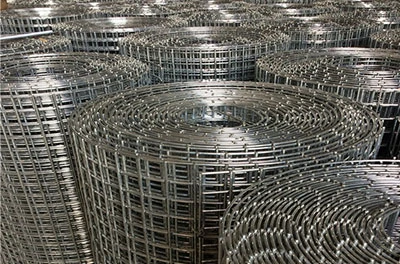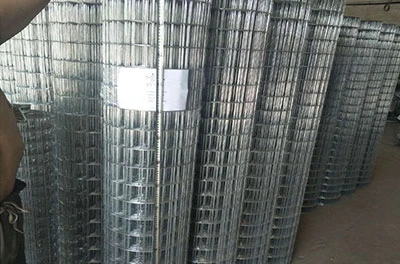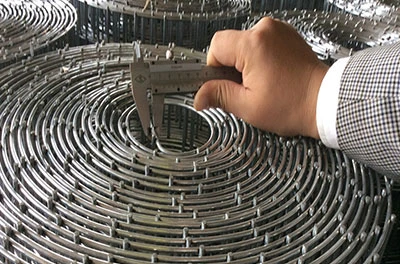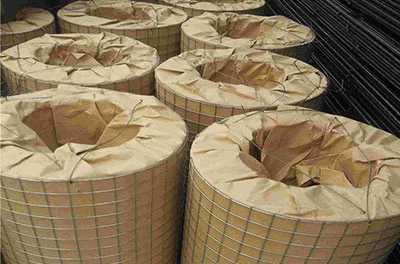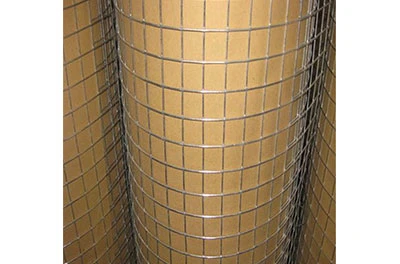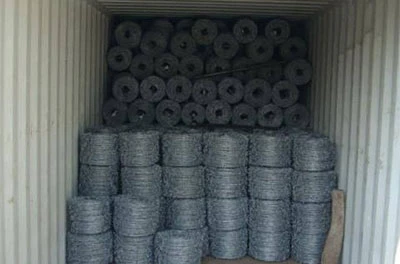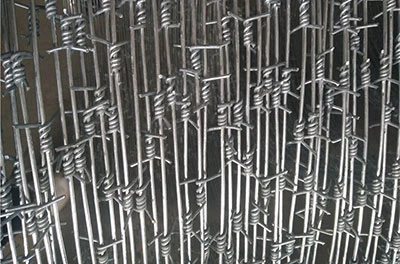Ago . 30, 2025 06:00 Back to list
Galvanized Welded Wire Mesh Panels: Durable & Corrosion-Resistant
Introduction to Galvanized Welded Wire Mesh Panels
In industrial and commercial applications, the demand for robust, corrosion-resistant, and versatile material solutions is paramount. Among these, the galvanized welded wire mesh panel stands out as a superior choice. These panels, renowned for their exceptional strength-to-weight ratio and enduring performance, are engineered to meet the stringent requirements of diverse sectors, from construction and agriculture to heavy industry. The intrinsic properties derived from the galvanization process provide a critical protective layer, significantly extending the service life of the product in challenging environmental conditions.
The structural integrity of galvanized welded wire mesh panel is achieved through precision welding of individual wires, creating a uniform grid pattern. This design not only ensures high load-bearing capacity but also facilitates easy installation and adaptability. This article delves into the intricate details of their manufacturing, technical specifications, diverse applications, and the distinct advantages they offer, providing a comprehensive resource for B2B decision-makers and technical professionals.
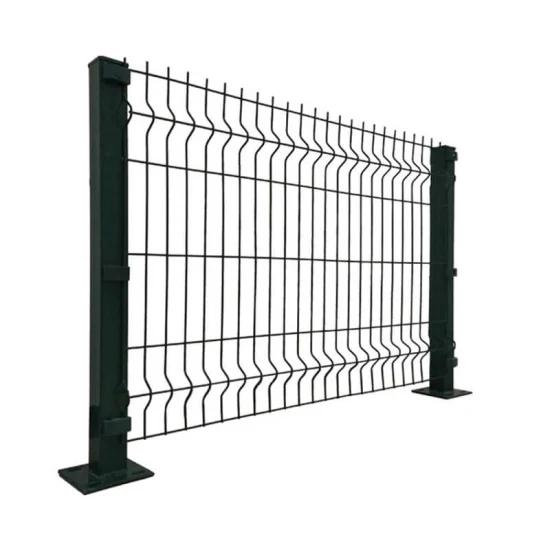
Detailed Manufacturing Process Flow
The production of galvanized welded wire mesh panel involves a meticulously controlled, multi-stage process designed to ensure product uniformity, strength, and superior corrosion resistance. This process typically begins with the selection of high-quality raw materials, followed by precision engineering and a robust galvanization treatment.
1. Raw Material Selection & Preparation
- Material: High-grade low carbon steel wire (e.g., Q195, Q235) or stainless steel wire. For standard galvanized welded wire mesh panel, low carbon steel is predominant due to its excellent weldability and cost-effectiveness.
- Wire Drawing: The steel rods are drawn through a series of dies to achieve the desired wire diameter, ensuring uniformity and tensile strength. Common wire diameters range from 2mm to 6mm, impacting the panel's rigidity and load capacity.
- Cleaning: Wires are thoroughly cleaned to remove oil, rust, and other impurities, which is crucial for optimal welding and subsequent galvanization adhesion. This often involves acid pickling and rinsing.
2. Precision Welding (CNC Machining)
- Automated Welding: Wires are fed into sophisticated CNC (Computer Numerical Control) welding machines. These machines precisely position the longitudinal and transverse wires at predetermined intervals.
- Resistance Welding: At each intersection, a high current is passed through the wires, creating localized heat and fusing them together. This resistance welding process ensures strong, consistent, and durable welds, preventing wire slippage and maintaining mesh integrity.
- Panel Formation: The continuous welding process forms large sheets of wire mesh, which are then cut to specific panel dimensions based on client requirements.
3. Galvanization Process
- Hot-Dip Galvanization: For post-weld galvanized panels, the entire welded mesh panel is immersed in a bath of molten zinc (typically at 450-460°C). This process creates a metallurgically bonded zinc coating that offers superior corrosion resistance compared to pre-galvanized wires where cut ends might be exposed.
- Electro-Galvanization: An alternative, where zinc is electroplated onto the wires before welding. While offering a smooth finish, hot-dip galvanization generally provides a thicker, more durable coating, crucial for longevity.
- Coating Thickness: Coating thickness is critical, often specified by standards like ASTM A123/A123M for hot-dip galvanized products, typically achieving 60-80 microns for robust protection.
4. Quality Control & Testing
- Visual Inspection: Checking for uniform mesh size, consistent welding, and absence of defects.
- Dimensional Accuracy: Verification of panel length, width, and mesh apertures against specified tolerances (e.g., ±2mm for mesh opening, ±10mm for panel dimensions).
- Zinc Coating Thickness Test: Using magnetic or eddy current gauges to ensure the galvanization meets required standards. Adherence to standards such as ISO 1461, ASTM A90/A90M (for zinc coating weight), or relevant local standards is critical.
- Adhesion Test: Assessing the bond strength of the zinc coating to the steel substrate.
- Tensile Strength Test: Periodically testing wire tensile strength and weld shear strength to ensure structural integrity, often conforming to ASTM A82/A82M or equivalent.

The stringent adherence to these manufacturing and testing protocols ensures that each galvanized welded wire mesh panel delivered offers superior strength, durability, and a projected service life of 20-30 years in typical outdoor conditions, depending on the zinc coating thickness and environmental corrosivity. This robust manufacturing underpins the product's advantages in energy saving (due to reduced maintenance) and exceptional corrosion resistance.
Industry Trends and Market Dynamics
The market for galvanized welded wire mesh panel is experiencing sustained growth, driven by global infrastructure development, increasing urbanization, and a heightened focus on durable and sustainable construction materials. Key trends include:
- Sustainability Focus: Growing demand for materials with longer lifespans and lower environmental impact. Galvanized products, with their extended durability, contribute to reduced material consumption and waste.
- Technological Advancements: Continuous innovation in welding technology and galvanization techniques is leading to even stronger, more uniform, and highly corrosion-resistant panels. Automated production lines are enhancing efficiency and precision.
- Customization & Niche Applications: A rising trend towards bespoke solutions, where manufacturers offer various mesh sizes, wire diameters, panel dimensions, and even specialized coatings (e.g., PVC coating over galvanization for enhanced aesthetics and protection) to meet specific project requirements.
- Emerging Markets: Rapid industrialization and infrastructure projects in Asia-Pacific, Latin America, and Africa are fueling significant demand for galvanized mesh panels, including galvanized steel mesh panels and galvanised steel mesh panels for security fencing, agriculture, and construction.
- Digitization in Supply Chain: Integration of digital tools for order processing, inventory management, and logistics is streamlining the procurement of these essential industrial components.
According to recent market analysis, the global welded wire mesh market is projected to reach approximately USD 6.5 billion by 2027, growing at a CAGR of over 4.5%. This growth is significantly bolstered by the demand for galvanized variants due to their superior performance characteristics in demanding environments.
Technical Specifications and Parameters
Understanding the technical specifications of galvanized welded wire mesh panel is crucial for proper selection and optimal performance. These parameters dictate the panel's strength, rigidity, and suitability for specific applications.
Typical Product Specifications
| Parameter | Description / Range | Standard Compliance |
|---|---|---|
| Material | Low Carbon Steel (Q195, Q235), Stainless Steel | ASTM A853, EN 10016-2 |
| Wire Diameter | 2.0mm - 6.0mm (0.079 - 0.236 inches) | ASTM A82/A82M, BS 4482 |
| Mesh Aperture | 25x25mm to 100x200mm (1x1 inch to 4x8 inches) | ISO 9044, ASTM A185/A185M |
| Panel Dimensions | Width: 0.5m - 2.5m; Length: 1.0m - 6.0m (Customizable) | Customer Specific, EN 10244-1 |
| Galvanization Type | Hot-Dip Galvanized (post-weld) or Electro-Galvanized (pre-weld) | ISO 1461, ASTM A123/A123M |
| Zinc Coating Thickness | Hot-dip: 60-80 microns (450-600 g/m²); Electro: 10-20 microns (70-140 g/m²) | ASTM A90/A90M |
| Tensile Strength (Wire) | 450-700 MPa | ASTM A82/A82M |
| Weld Shear Strength | Minimum 70% of parent wire tensile strength | ASTM A185/A185M |
These specifications highlight the robustness and reliability of galvanized mesh panels, making them suitable for demanding environments where structural integrity and corrosion resistance are critical.
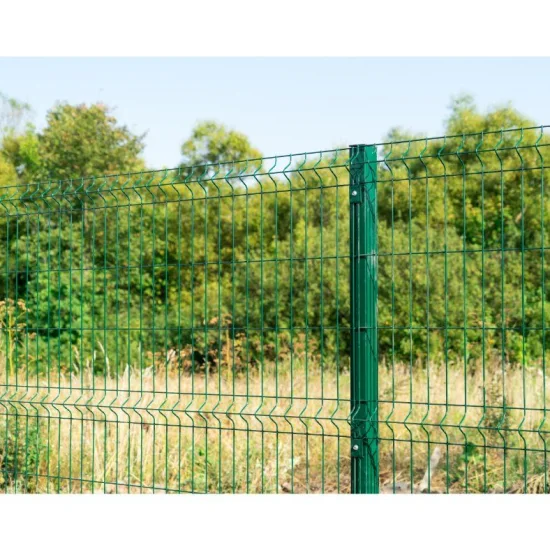
Application Scenarios Across Target Industries
The versatility of galvanized welded wire mesh panel allows for its extensive use across a multitude of industries. Its inherent strength and corrosion resistance make it an ideal material for both structural and protective applications.
- Construction & Infrastructure:
- Concrete Reinforcement: Used as reinforcement mesh in concrete slabs, foundations, and roads, providing structural integrity and preventing cracking.
- Security Fencing: Perimeter security for commercial properties, industrial sites, airports, and public facilities, often as robust galvanized wire mesh panels.
- Gabion Baskets: Filled with rocks, these panels form retaining walls, erosion control structures, and sound barriers, particularly in civil engineering projects.
- Stair Treads and Walkways: Provides anti-slip surfaces in industrial settings.
- Agriculture & Horticulture:
- Animal Enclosures: Cages for poultry, rabbits, and other livestock, as well as protective barriers for farm animals.
- Crop Protection: Fencing to deter pests and wildlife, ensuring crop security.
- Trellises and Supports: Providing structural support for climbing plants and vines in vineyards and greenhouses.
- Industrial & Manufacturing:
- Machine Guards: Protective enclosures around machinery to ensure worker safety without obstructing visibility.
- Storage & Shelving: Robust shelving units and pallet racking infills in warehouses and factories.
- Filtration Systems: Used as support for filter media in various industrial processes, including water treatment.
- Mining & Energy:
- Mine Support: Rockfall protection and tunnel reinforcement, providing critical safety in mining operations.
- Perimeter Fencing: Securing sensitive energy infrastructure, including power plants and substations.
- Architectural & Decorative:
- Facade Elements: Modern architectural designs often incorporate mesh panels for aesthetic appeal, shading, and ventilation.
- Balustrades & Railings: Used as infill panels for contemporary balustrade systems.
The long service life and minimal maintenance requirements of galvanized welded wire mesh panel make it a cost-effective choice in these demanding applications, especially in sectors like petrochemicals (for platforms and grating), metallurgy (for protective barriers), and water supply & drainage (for screening and filtration).
Technical Advantages and Performance Metrics
The selection of galvanized welded wire mesh panel over other materials is often dictated by its superior technical advantages, particularly in environments prone to corrosion and requiring high structural integrity.
- Exceptional Corrosion Resistance: The zinc coating acts as a sacrificial layer, protecting the underlying steel from rust and environmental degradation. Hot-dip galvanization provides a robust, metallurgical bond, ensuring resistance against various atmospheric, chemical, and moisture-related corrosive agents. This is a primary advantage over non-galvanized alternatives.
- High Strength and Durability: Precision resistance welding creates strong, rigid intersections. The tensile strength of the high-quality steel wire, combined with the structural integrity of the welded grid, enables these panels to withstand significant impacts and loads without deformation.
- Longevity and Low Maintenance: With proper galvanization (e.g., 80-micron zinc coating), the expected service life can exceed 20-30 years in many outdoor environments, significantly reducing maintenance costs and the need for frequent replacements. This translates to substantial long-term cost savings.
- Versatility in Design and Application: Available in a wide range of mesh sizes, wire gauges, and panel dimensions, galvanized wire mesh panels can be easily cut, formed, and fabricated to suit specific project requirements. Its open structure allows for light, air, and liquid passage.
- Cost-Effectiveness: While the initial investment might be slightly higher than untreated steel, the extended lifespan, minimal maintenance, and superior performance of galvanized mesh panels offer a significantly lower total cost of ownership over the product's life cycle.
- Fire Resistance: Steel is inherently non-combustible, and the zinc coating does not significantly alter this property, making it suitable for applications where fire safety is a concern.
Performance Comparison: Galvanized vs. Non-Galvanized Welded Mesh
| Feature | Galvanized Welded Mesh | Non-Galvanized Welded Mesh |
|---|---|---|
| Corrosion Resistance | Excellent (Zinc acts as sacrificial barrier) | Poor (Prone to rust, short lifespan outdoors) |
| Service Life | 20-30+ years in typical conditions | ~1-5 years outdoors, faster degradation |
| Maintenance Requirements | Very Low (No painting or surface treatment needed) | High (Regular painting/rust removal required) |
| Initial Cost | Moderate to High | Low |
| Total Cost of Ownership (TCO) | Low (Due to long life & low maintenance) | High (Due to frequent replacement & maintenance) |
| Aesthetic Retention | Excellent (Maintains bright finish longer, less staining) | Poor (Rust staining, dull appearance) |

Vendor Comparison and Selection Criteria
Selecting the right vendor for galvanized welded wire mesh panel is critical to project success, impacting quality, lead times, and overall cost-efficiency. While specific vendor names are not discussed here, key criteria for evaluation are presented.
- Quality Assurance & Certifications: A reputable vendor will demonstrate adherence to international quality standards such as ISO 9001:2015. Look for certifications related to material composition (e.g., ASTM, EN standards) and galvanization processes (e.g., ISO 1461, ASTM A123/A123M). Evidence of in-house testing and third-party verification is a strong indicator of reliability for their galvanized mesh panels.
- Manufacturing Capabilities: Assess the vendor's production capacity, technology (e.g., advanced CNC welding, automated galvanizing lines), and their ability to handle large-volume orders efficiently without compromising quality.
- Customization Expertise: For unique projects, the ability to provide tailored solutions—different mesh sizes, wire diameters, panel dimensions, and specialized finishes (e.g., PVC coating over galvanization)—is crucial. This indicates a flexible and customer-centric approach.
- Experience and Reputation: Vendors with a long history (e.g., 10+ years) in the industry and a strong portfolio of successful projects (case studies, client testimonials) are generally more reliable. Look for partnerships with well-known clients or involvement in significant infrastructure projects.
- Supply Chain and Logistics: Efficient lead times, reliable shipping, and robust packaging are essential to prevent damage during transit. A vendor with established logistics networks can significantly reduce project delays.
- Technical Support and After-Sales Service: Availability of expert technical advice during specification, responsive customer service, and clear warranty policies are vital for long-term satisfaction.
For critical applications, it is advisable to conduct site visits or request detailed factory audits to verify manufacturing processes and quality control measures for galvanized steel mesh panels.
Customized Solutions for Unique Project Demands
While standard galvanized welded wire mesh panel configurations serve a broad range of applications, many industrial and architectural projects require bespoke solutions. Customization capabilities are a hallmark of a proficient mesh manufacturer.
- Tailored Dimensions: Panels can be manufactured to exact length and width specifications, minimizing waste and speeding up installation on-site.
- Variable Mesh Apertures and Wire Gauges: Depending on the required permeability, load-bearing capacity, or security level, mesh openings can range from very fine (e.g., 12.7x12.7mm for pest control) to wide (e.g., 100x200mm for heavy-duty reinforcement), with corresponding wire diameters.
- Post-Galvanization Coatings: For enhanced aesthetics or additional corrosion protection in extremely aggressive environments, galvanized steel mesh panels can be further coated with PVC, powder coating, or other polymer layers in various RAL colors.
- Edge Treatments and Fabrication: Custom edge finishes, pre-drilled holes, cut-outs, or specific bending and shaping (e.g., 3D curved panels for aesthetic fencing) can be incorporated during manufacturing to facilitate easier integration into complex designs.
- Material Alternatives: While galvanized steel is standard, specialized requirements might involve stainless steel welded mesh for extreme chemical resistance, which can then also be passivated or electropolished for further protection.
Collaboration with engineering teams and the use of CAD/CAM software allow manufacturers to translate complex design requirements into precision-manufactured galvanised steel mesh panels, ensuring optimal fit and function for even the most demanding projects.

Application Case Studies
Real-world applications demonstrate the practical advantages and reliability of galvanized welded wire mesh panel solutions.
Case Study 1: Perimeter Security for a Hydroelectric Power Plant
A major energy provider required high-security perimeter fencing for a new hydroelectric power plant in a humid, temperate climate. The solution needed to be highly resistant to corrosion and offer significant deterrence against unauthorized access. Galvanized steel mesh panels, specifically hot-dip galvanized post-weld, with a 50x50mm mesh aperture and 4mm wire diameter, were selected. The robust zinc coating ensured longevity exceeding 25 years without significant degradation, even in the moisture-rich environment near the dam. The rigidity of the welded panel construction provided a formidable physical barrier, and the open mesh allowed for clear CCTV surveillance, demonstrating a balance of security and operational visibility. Customer feedback highlighted ease of installation and minimal ongoing maintenance as key benefits.
Case Study 2: Agricultural Animal Enclosures in Coastal Region
A large-scale poultry farm located in a coastal area faced issues with rapid corrosion of traditional fencing due to salt spray. They needed durable enclosures for thousands of chickens that could withstand the harsh marine environment. Customized galvanized wire mesh panels (25x25mm mesh, 2.5mm wire diameter) were specified. The post-weld hot-dip galvanization provided a thick, uniform zinc layer, offering superior protection against saltwater corrosion. The panels were easy to clean and sanitize, contributing to animal health. After five years, the panels showed no signs of rust, a significant improvement over previous materials, resulting in substantial savings on replacement costs and farm operational efficiency.
Case Study 3: Industrial Machine Guarding in a Chemical Plant
A chemical processing plant needed robust and chemically resistant safety guards around sensitive machinery. The environment contained airborne corrosive agents. Standard steel mesh would quickly degrade. Custom-fabricated galvanized welded wire mesh panel units, additionally coated with a specialized PVC layer (green RAL 6005) over the galvanization, were implemented. The double-layer protection (zinc + PVC) offered unparalleled resistance to the chemical atmosphere, extending the lifespan of the guards and ensuring continuous worker safety. The transparent mesh design maintained visibility for operators to monitor machine operation, and the green color blended seamlessly with the plant's safety aesthetics. This project demonstrated the value of multi-layered protection and customization.
Trustworthiness: FAQ, Lead Time, Warranty & Support
Establishing trust with B2B clients requires transparency in product performance, logistics, and after-sales support.
Frequently Asked Questions (FAQ)
-
Q: What is the primary benefit of hot-dip galvanization for welded mesh panels?
A: Hot-dip galvanization provides a thicker, more durable, and metallurgically bonded zinc coating that offers superior corrosion resistance and a longer service life compared to electro-galvanization or pre-galvanized wires, especially at weld points. -
Q: Can your galvanized welded wire mesh panel be cut or bent on-site?
A: Yes, these panels can be cut using appropriate tools (e.g., bolt cutters, angle grinders) and bent to a limited degree. However, cutting or excessive bending will expose the inner steel, potentially compromising the galvanization at that specific point. We recommend factory pre-fabrication for precise requirements. -
Q: What is the expected service life of a hot-dip galvanized mesh panel?
A: In typical atmospheric conditions (rural/suburban), a hot-dip galvanized welded wire mesh panel with a standard coating thickness (e.g., 60-80 microns) can offer a service life of 20 to 30 years, often much longer depending on local environmental factors and coating quality. -
Q: Are your galvanized wire mesh panels compliant with international standards?
A: Yes, our products typically comply with relevant international standards such as ISO 1461 for hot-dip galvanization, ASTM A123/A123M for zinc coatings, and ASTM A185/A185M for welded steel wire reinforcement. Specific compliance details are provided per product batch.
Lead Time and Fulfillment Details
We maintain efficient production schedules to meet project deadlines.
- Standard Orders: Typical lead time for standard galvanized mesh panels is 10-15 business days from order confirmation, depending on quantity.
- Customized Orders: For bespoke dimensions or specialized coatings, lead times may range from 15-25 business days, subject to design complexity and material availability.
- Expedited Options: Rush orders can be accommodated based on production capacity and material stock; please consult with our sales team for feasibility and pricing.
- Packaging & Shipping: Panels are typically bundled and secured on pallets, often wrapped in plastic film for protection during transit. We work with trusted logistics partners for both domestic and international shipping, providing clear tracking information.
Warranty Commitments
We stand behind the quality of our galvanized welded wire mesh panel products.
- Material & Workmanship: A standard 1-year warranty against defects in material and workmanship under normal use conditions.
- Corrosion Resistance: For hot-dip galvanized panels, we offer a limited warranty on the integrity of the zinc coating against flaking or peeling for 10 years, assuming proper installation and environmental conditions consistent with ISO 14713 recommendations. This excludes damage from mechanical abuse or exposure to highly corrosive agents beyond standard atmospheric conditions.
- Extended Warranties: Project-specific extended warranties may be available upon discussion for large-scale or critical infrastructure projects.
Customer Support Information
Our dedicated support team is available to assist you from inquiry to after-sales service.
- Technical Assistance: Our experienced engineers and product specialists provide guidance on product selection, technical specifications, and application queries.
- Ordering & Sales Support: Our sales team is available to process quotations, manage orders, and provide updates on lead times and delivery.
- After-Sales Service: For any post-purchase queries, warranty claims, or product feedback, our customer service department is ready to help.
- Contact Details: Please visit our website (e.g., chengsenmesh.com) or contact us directly via phone or email for prompt assistance.

Conclusion
The galvanized welded wire mesh panel represents an indispensable component in modern industrial and construction landscapes. Its superior blend of strength, versatility, and enduring corrosion resistance, underpinned by meticulous manufacturing processes and adherence to stringent quality standards, positions it as a highly reliable and cost-effective solution. From critical infrastructure reinforcement to advanced security systems and agricultural applications, these panels offer unmatched performance and longevity. As industries continue to seek sustainable and durable material solutions, the demand for high-quality galvanized mesh panels will only continue to grow, solidifying their role as a foundational element in engineering and design.
References
- ASTM International. "Standard Specification for Zinc (Hot-Dip Galvanized) Coatings on Iron and Steel Products." ASTM A123/A123M.
- ISO. "Hot dip galvanized coatings on fabricated iron and steel articles — Specifications and test methods." ISO 1461.
- The Galvanizers Association. "Corrosion Protection by Hot Dip Galvanizing."
- European Committee for Standardization. "Steel for the reinforcement of concrete — Weldable reinforcing steel — General." EN 10080.
- Grand View Research. "Welded Wire Mesh Market Size, Share & Trends Analysis Report."
This is the first article
Latest News
-
Durable PVC Wire Mesh Panels for Fencing & Security
NewsAug.29,2025
-
2.5mm Hot Galvanized Barbed Wire Price | 25kg 50kg Rolls & Types
NewsAug.28,2025
-
Galvanized Steel Grating for Platform Walkways | Welded 40x3
NewsAug.27,2025
-
Hinged HDG Anti-Slip Offshore Serrated Steel Grating
NewsAug.26,2025
-
Factory Supply 6063 Anodized Aluminum Grating Walkway Platform
NewsAug.21,2025
Our company owns has excellent CAD steel grating drawing designers, who can provide customers with perfect steel grating layout design and better meet customers' special requirements for products. We have been adhering to it the business tenet of "quality first, customer first", with high-quality products, reasonable prices, and the fastest delivery time, we wholeheartedly provide customers with a full range of services! Welcome new and old customers to cooperate sincerely and create brilliance together!
Contact Us
WELCOME TO OUR COMPANY!
Thank you for your interest in our services! If you have any questions or wousld like to book a service, please don’t hesitate to contact us. Our team is dedicated to providing you with the highest level of service and support, and we are committed to working with you to make your event a success.

Service Email

Service Phone
Product Center
Contact Us
- Phone: +86 +86 15733154345
- E-mail: sales@chengsenchina.com
- Address: B1213 GLOBAL CENTER, NO.226 ZHONGHUA NORTH STREET, SHIJIAHUANG, CHINA


